Poetry & Prose in Translation: Vicente Huidobro (1893–1948)
Volodia Teitelboim Vicente Huidobro — in perpetual motion. A Biography.
Book preview
Translated from Spanish by Tony Frazer
Published 2022. Paperback, 328pp, 9 x 6ins, £16.95 / $25.
ISBN 9781848618084
Volodia Teitelboim knew Huidobro when the poet returned to Chile from Paris after the Great Depression began. A tyro poet himself, and a committed leftist, the author was to fall out with Huidobro before the end of the decade, but not before co-editing the groundbreaking
Anthology of New Chilean Poetry in 1935, which foregrounded Huidobro's work. Poet, novelist and essayist, as well as, eventually, leader of Chile's Communist Party, Teitelboim is an excellent and often amusing guide to his mercurial subject, and offers a plethora of stories and anecdotes from those who knew Huidobro well, as well as recalled conversations with the great man himself. This book was the third of Teitelboim's poet biographies, following books devoted to Neruda and Mistral.
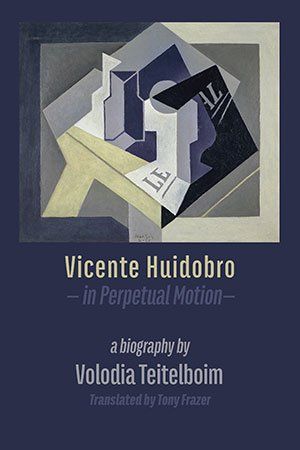
Vicente Huidobro Skyquake
Book preview
Translated from Spanish by Tony Frazer. Bilingual volume.
Published 2019. Paperback, 80pp, 9 x 6ins, £10.95 / $18
ISBN 9781848616417
The prose-poem Temblor de cielo was written in 1928 and published in 1931. A more unified work than its companion, Altazor —also published in 1931, but longer in gestation—this might owe more to its style of delivery: an ecstatic outpouring of words that largely revolve around the themes of love, sex and death. The Isolde to whom much of the poem is addressed is an idealised feminine figure—part goddess, part idealised beloved, part Isolde from Wagner’s opera (another ecstatic outpouring on the theme of love, sex and death) and part Ximena Amunátegui, the young woman who had become the poet’s second wife. The poem is also a sustained lyric effusion of a kind that Huidobro had never produced before, and it marks the point at which his work moves on from the barnstorming avant-garderie of his younger years to a more mature style, albeit one influenced by surrealism, a movement which Huidobro had previously attacked. It is also the last time that Huidobro was to adopt the god-like narrative persona that occurs in his earlier work.
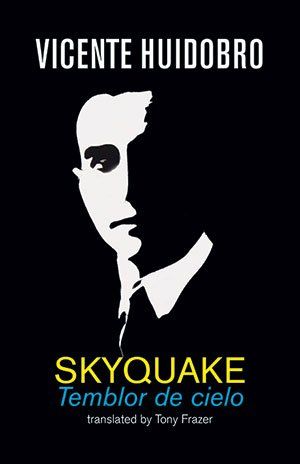
Vicente Huidobro Arctic Poems
Book preview
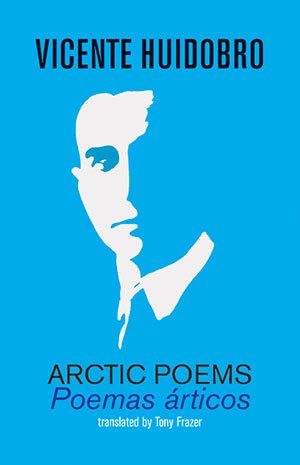
Vicente Huidobro Square Horizon
Book preview
Translated from French and Spanish by Tony Frazer. Bilingual volume.
Published 2019. Paperback, 136pp, 9 x 6ins, £12.95 / $20
ISBN 9781848616516
Huidobro published Horizon carré in Paris in 1917), and quickly followed it with Tour Eiffel (in French; Madrid, 1918), Hallali (in French; Madrid, 1918); Ecuatorial (in Spanish; Madrid, 1918) and Poemas árticos , likewise published in Spanish in Madrid.
Horizon carré is heavily influenced by the work of Guillaume Apollinaire and marks Huidobro’s definitive arrival on the avant-garde scene in Paris, even if—it has to be said—the volume is derivative; it also includes several poems from his earlier collection El espejo de agua , translated in to French and re-set to accord with the shaped texts of the new book. Huidobro’s French was good even before he arrived in Paris: he had been educated well in Santiago, but this would not have prepared him for the linguistic and intellectual ferment he would find upon arrival in the main seat of the international avant-garde. Many of his early French-language manuscripts show signs of corrections by his friends at the time—the French poet, Pierre Reverdy and the Spanish artist, Francis Picabia, among them.
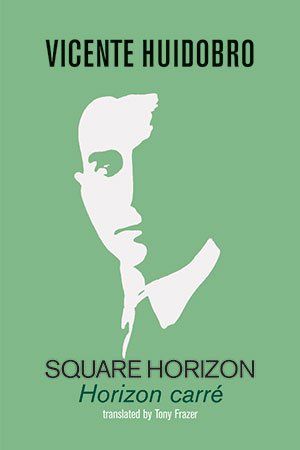
Vicente Huidobro Equatorial & other poems (2nd, expanded edition)
Translated from Spanish & French by Eliot Weinberger. Bilingual volume. 2nd, expanded edition.
Published 2024. Paperback, 124pp, 9 x 6ins, £12.95 / $20
ISBN 9781848619190
This volume presents the 4 chapbooks published by Huidobro in 1917–18 and offers, at first glance, an odd mixture. Chronologically, we have El espejo de agua , written in Spanish in 1914–16, first published in 1916, but, to all intents and purposes not distributed until 1918; Ecuatorial (written in Spanish, although the author also made a French version, Équatoriale , which is believed to be later), Hallali and Tour Eiffel , the last two being composed in French. The last two publications from this period, Hallali and Tour Eiffel— both marked by textual experimentation—were important for the rising wave of the new Spanish avant-garde. The 4 chapbooks were bookended, so to speak, by the French-language volume Horizon carré and the Spanish-language collection, Poemas árticos (both already issued in this series—see above). This second, expanded edition also contains the French version, Équatoriale, as well as alternative versions of Tour Eiffel in both French and Spanish.
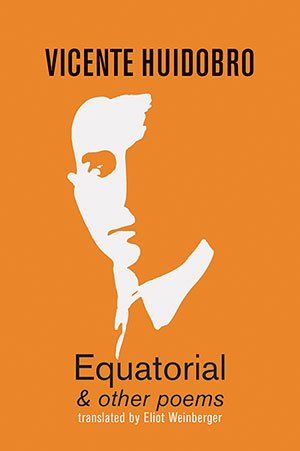
Vicente Huidobro Equatorial & other poems
Translated from Spanish & French by Eliot Weinberger. Bilingual volume. OUT OF PRINT.
Published 2019. Paperback, 90pp, 9 x 6ins
ISBN 9781848616523 [Download a sample PDF from this book here .]
Replaced by the 2nd edition above.

Vicente Huidobro Selected Poems
Book preview
Edited by Tony Frazer. Translated from Spanish & French by Michael Smith & Luis Ingelmo,
Eliot Weinberger and Tony Frazer. Bilingual.
Published 2019. Paperback, 216pp, 9 x 6ins, £14.95 / $23
ISBN 9781848616547
This selected edition presents an overview of all of Huidobro's work, from 1914 until 1948, when his final, posthumous volume was published. moving from the early symbolist work, though the high avant-garde phase towards the end of the First World War, then through the phase of Altazor and Temblor de cielo (Skyquake) , the highpoint of his career (both published 1931), and on into the quieter late poetry which synthesises the previous work and settles down into a post-vanguard style. Also includes manifestos and interviews.
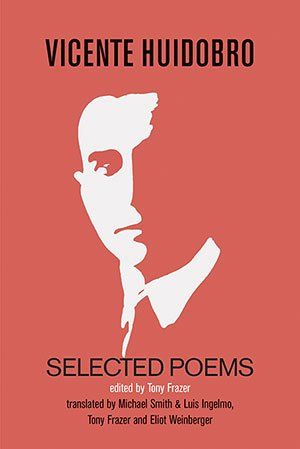
Vicente Huidobro Manifestos
Book preview
Translated from French by Tony Frazer. Bilingual volume.
Published 2020. Paperback, 116pp, 9 x 6ins, £12.95 / $20
ISBN 9781848616950
Huidobro published this collection of manifestos and statements on poetics in 1925, and it summed up the previous 8 or 9 years of his work. The truth is, however, that he was already moving away from some of the positions espoused in this volume, and this volume and the two poetry collections listed below as Paris 1925 , were his last publications in French. From 1926 onwards he is emphatically a Spanish-language poet, although some works continued to be composed in both languages (particularly Altazor and Temblor de cielo / Tremblement de ciel ), or were translated by the author into French for magazine publication.
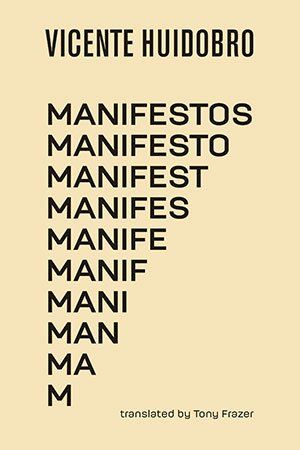
Vicente Huidobro Paris 1925: Ordinary Autumn & All of a Sudden / Automne régulier & Tout à coup
Book preview
Automne régulier & Tout à coup
Translated from French by Tony Frazer. Bilingual volume.
Published 2020. Paperback, 158pp, 9 x 6ins, £12.95 / $20
ISBN 9781848616936
Before attaining his poetic maturity — and this would be through poems written mostly in Spanish — Huidobro wrote these two collections in French and published them in Paris in 1925, the same year that a volume of his manifestos appeared (see below). The two books have never been republished in France and have likewise not been published in Spanish translation other than in collected editions of the author’s works. While they are in some respects a developmental dead-end for Huidobro, they do demonstrate his attempts to engage, in one volume, with the influence of Dada, and, in the other, with the influence of Surrealism. His later work transcends these overt influences and moves onto new pastures, but these experiments were necessary in order to get him there. The complete texts of both first editions are included here along with all the (later) Spanish versions of the poems, made by the author himself, that have so far come to light.
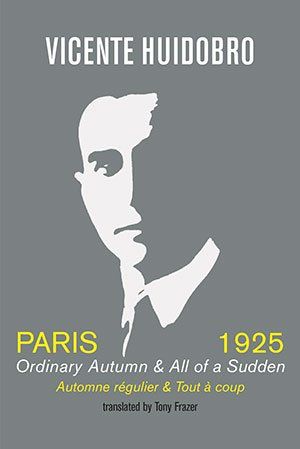
Vicente Huidobro Adam
Book preview
Translated from Spanish by Tony Frazer. Bilingual edition.
Published 2021. Paperback, 108pp, 9 x 6ins, £10.95 / $18
ISBN 9781848617759
This volume is only the second English translation of Huidobro’s earliest mature poetry, the first work to indicate that there was more to him than the pale imitation of Rubén Darío that was evidenced in his first two books. Written between 1914 and 1916, and published in Santiago in 1916, it was Huidobro’s first extended attempt at free verse. It is probably fair to say that the book would today be mostly ignored, were it not for the author’s spectacular later career, but it retains considerable interest as a transitional volume, alongside the subsequent collection,
El espejo de agua (The Water Mirror), also published in 1916, before he rushed headlong into the
vanguardia and international modernism.
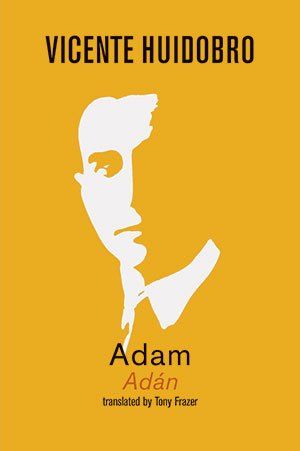
Vicente Huidobro Citizen of Oblivion
Translated from Spanish by Tony Frazer. Bilingual edition.
Published 2021. Paperback, 230pp, 9 x 6ins, £14.95 / $24
ISBN 9781848616943
In 1941, Huidobro was to do something that he had done several times before, which was to issue two new collections of his poems in the same year, this time in Santiago, rather than in Paris or Madrid. His previous new publications had been in 1931, the banner year in which Altazor and Temblor de cielo (Skyquake) appeared, although an extensive Selected had appeared in 1935. The poems in this volume were composed between 1924 and 1934, according to the title page of the first edition, and thus come from the heated period in which those two previous works had germinated, the period in which the author had returned to Paris with a new wife and had published a successful novel, and the period in which his work grew to be that of a contemporary master. Added to the original collection here are four French versions of the poems made by the author himself.
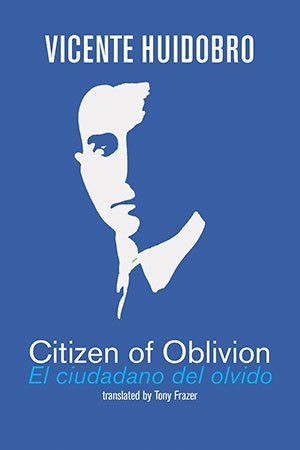
Vicente Huidobro Seeing and Touching
Translated from Spanish by Tony Frazer
Published 2023. Paperback, 168pp, 9 x 6ins, £14.95 / $23.
ISBN 9781848617681
Ver y palpar is one of two books from 1941 which between them include some of Huidobro’s finest work, something that most commentators have tended to ignore, preferring usually to engage with
Altazor or with the earlier books such as
Poemas árticos, and their attendant Creationist theory. On the other hand, the rupture between the poetic text and empirical reality, exemplified by Creationist theory (but not always adhered to by the author) may well have become embedded in the subtext of these later poems, with their disrupted syntax, and their clearly surrealistic tendencies. Almost certainly under the influence of surrealism, in many of the poems Huidobro moves towards something far looser than his original theoretical position. There is a deliberate instability in many of the poems, arising from unusual, even awkward syntax, and the suppression of syntactic linkages within the poems, something that was also evident in later cantos of Altazor.
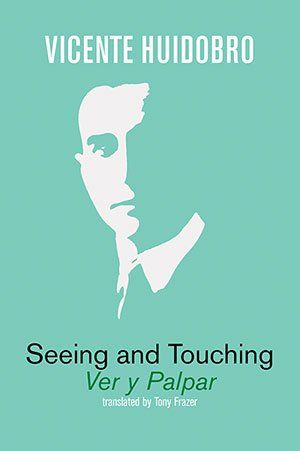
Vicente Huidobro Last Poems / Últimos poemas
Translated from Spanish by Tony Frazer
To be published mid-2024. Paperback, ca. 200pp, 9 x 6ins, £14.95 / $24.
ISBN 9781848618176 [Download a sample PDF from this book here.]
A posthumous collection, assembled by the poet's eldest daughter and published in 1948,
Last Poems includes a number of very important late poems.
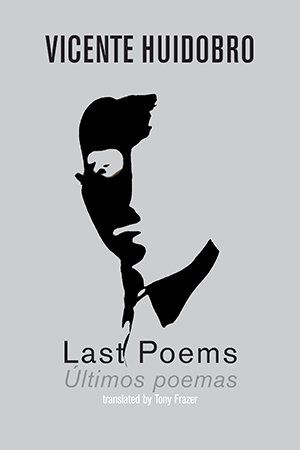
Vicente Huidobro Altazor
Translated from Spanish by Tony Frazer & Terence Dooley.
To Be Published late 2024, date tbc. Paperback, 236pp, 9 x 6ins, £14.95 / $24
ISBN 9781848619258 [Download a sample PDF from this book here.]
Altazor is increasingly seen as one of the key works of the 20th-century Hispanic avant-garde in poetry. Apparently put together over several years, it looks back in part to the ground-breaking volume Ecuatorial (1918), imbibes a number of futurist tropes from that same era, takes in the surrealist wave that took hold in the mid-1920s, and ends with shattered pieces of language that appear to admit of the impossibility of finishing the work coherently, or even coherent speech, while also implying a more pessimistic view of the world than that which Huidobro would have espoused as a younger man during the heyday of Cubist Paris. In amongst all this, the poem’s eponymous protagonist flies high and low, taking in the heavens and the depths of hell, following both Dedalus and Orpheus. While the book evidently left his contemporaries puzzled, and had minimal initial impact, Altazor today looks uncannily prophetic, even post-modern, in its emphasis on verbal games and trickery, on defamiliarisation, and being comfortable with a lack of any conclusion. Huidobro even boasted of this lack in a letter to Luis Buñuel, referencing Lautréamont and Rimbaud as other “failures” whose company he was glad to keep.
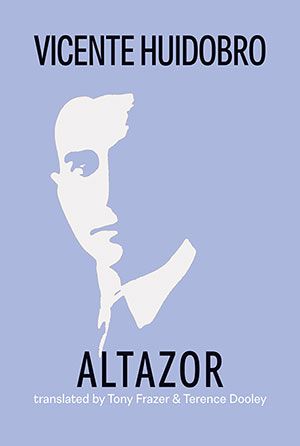
Vicente Huidobro Uncollected Poems / Poemas inéditos
Translated from Spanish by Tony Frazer
To be published 2025. Paperback, ca. 180pp, 9 x 6ins, £14.95 / $23.
ISBN 9781848618183 [Download a sample PDF from this book here.]
This volume will contain all the author's uncollected mature poems, whether written in French or in Spanish, that we have been able to trace.
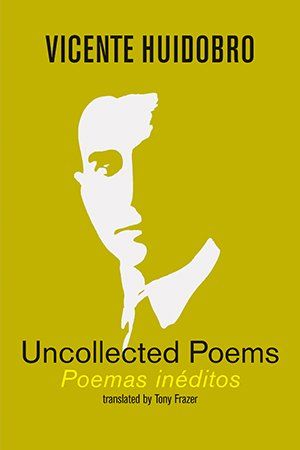
Vicente Huidobro Painted Poems
Texts of poems translated from French by Tony Frazer. With an essay by Rosa Sarabia.
To Be Published 2024 or 2025. Paperback, ca. 96pp, 9 x 6ins, £12.95 / $20
ISBN 9781848618206 [Download a sample PDF from this book here.]
In 1922, in Paris, Vicente Huidobro exhibited a dozen painted poems: poster-sized, these exotic creations were an attempt by the poet — who was close to a number of the leading painters of the time — to take the Cubist leanings in his verse to their logical extreme. Here Apollinairean
calligrammes — and Apollinaire was one of Huidobro's first friends in Paris — move from being pictorial poems to being pictures in their own right. The volume includes all the recreated versions made for the 2001
Salle XIV exhibition at Madrid's Reina Sofía Museum, along with with as many reproductions of the originals, and their drafts, that we have been able to assemble.
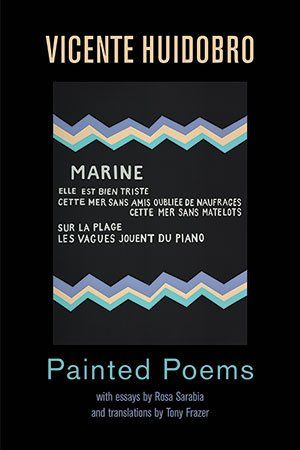
Vicente Huidobro Adverse Winds / Vientos contrarios
Book preview
Translated from Spanish by Tony Frazer. Bilingual edition.
Published 2023. Paperback, 208pp, 9 x 6ins, £14.95 / $24
ISBN 9781848618541
Adverse Winds is a collection of essays, aphorisms, maxims and observations, some quasi-autobiographical, published by Huidobro in Santiago in 1926, after his return from many years in Europe.
At this distance in time it is perhaps difficult to grasp that this noisy, wealthy and entitled poet, who had cut something of a swathe through literary Paris – was almost unknown back home in Santiago. He had published nothing there apart from self-financed volumes of juvenilia before his departure for Paris in 1916, and his new avant-garde work from the Paris period was strange territory for provincial, behind-the-times Santiago.
Needing to attract some attention upon his return, Huidobro assembled this collection as an introduction to the serious new self that he wished to present to those who might have heard a few rumours of his successes abroad. The break-up of his marriage shortly afterwards, and the surrounding scandal, were to ruin his attempts in this direction, and cause his rapid return to Europe, this time sans famille and pursued by death-threats from irate relatives of his new young paramour. Looked at objectively, the book is a grab-bag, including some fascinating and oft-quoted statements (the poet is a little god; I will be the premier poet of my time, etc.), alongside a number of sideswipes at writers he wished to denigrate, and even dismissals of some he had once regarded as friends. His excursions – daring for their time – into matters of love, sex and infidelity in the maxims and aphorisms must have struck many after the scandal as being, at the very least, misguided. The book should be seen as a pendant to the previous year’s collection of Manifestos (also available in this series).
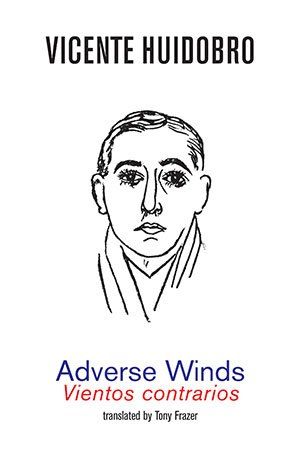
Vicente Huidobro El Cid / Mío Cid Campeador
Book preview
Translated from Spanish by Warre Bradley Wells. Second Edition. English only.
Published 2019. Paperback, 240pp, 9 x 6ins, £14.95 / $24
ISBN 9781848616288
In 1928, shortly after his marriage to Ximena Amunátegui, and after meeting the actor Douglas Fairbanks, Huidobro began writing his version of the Cid legend as a novel. The result is a very readable, if slightly arch, version of the story, at times looking back to 19th-century romantic historical fiction, while at other times nodding towards more modern approaches. Style aside, the book can be read a straightforward tale of derring-do that sits happily alongside the 1961 epic movie that starred Heston and Loren and had thousands of extras. More than one line of the script for that movie sounds like something from Huidobro’s novel. The translation by Wells appeared quickly, in 1931, in both London and New York, and this reprint offers the original version with some minor edits, together with an afterword and an extensive glossary to aid the reader with figures, both legendary and genuine, from Old Spain.
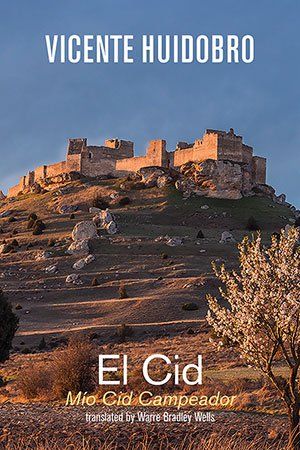
Vicente Huidobro Cagliostro
Book preview
Translated from Spanish by Warre Bradley Wells. Second edition. English only.
Published 2019. Paperback, 104pp, 9 x 6ins, £10.95 / $18
ISBN 9781848616585
In the 1920s, Huidobro — always fascinated by the new medium of film — apparently wrote a film script on the subject of Cagliostro, a treatment very much in tune with the German expressionist cinema of the early 20s. Huidobro claimed that the film was made in 1923 by the Romanian director Mime Mizu but that this had been scrapped due to dissatisfaction over the editing. No trace of the film survives, although three pages of a script do survive in the author's papers. A revised version was submitted to The League for Better Motion Pictures in New York and won a $10,000 prize as the best candidate for filming — just at the point when the "talkies" arrived and this expressionist style of silent film was rendered immediately out of date. Making the best of the situation, Huidobro converted the script into a novella, with many cinematic elements, and it was published in translation in 1931 in both London and New York, to positive reviews. It appeared in the original Spanish only in 1934, in Santiago, and had no impact at all. This edition reproduces the text of the 1931 translation.
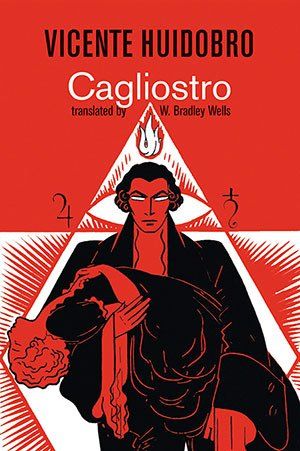
Vicente Huidobro & Hans Arp Three Huge Novels
Book preview
Translated from Spanish by Tony Frazer. Bilingual edition.
Published 2020. Paperback, 94pp, 9 x 6ins, £10.95 / $18
ISBN 9781848617247
In 1931, while on holiday in Arcachon, France, Huidobro and the Franco-German artist and writer, Hans (Jean) Arp together wrote Tres novelas exemplares (Three Exemplary Novels — no doubt a reference to the Exemplary Novels by Cervantes, to which of course they bear no resemblance at all), a set of wild quasi-surrealist "stories". In 1935, Huidobro — once again living in Chile — offered the set to a publisher in Santiago, but was told that the book was too short. Accordingly he wrote two further stories on his own, and the whole volume was titled Tres inmensas novelas . Which are therefore, not three, not huge and not novels. This volume offers all five stories in a bilingual format, and the cover is almost a copy of the one used in the first edition. The translation of the texts is from Huidobro's own Spanish version, the French originals having been lost.

Vicente Huidobro Satyr, or The Power of Words / Sátiro, o el poder de las palabras
Translated from Spanish by Tony Frazer
Published 2023. Paperback, 180pp, 9 x 6ins, £14.95 / $23. English only.
ISBN 9781848619111
Satyr is Huidobro’s last novel, published in Santiago in 1939, at a time when little of his work was in print in his native land. While that situation would be rectified two years later, with the release of two major poetry collections, this volume is his final work in prose, and one that has mostly escaped attention since. Closer examination of the text reveals however that it contains a number of the author’s literary, social, political and philosophical preoccupations, with many themes from his poems, essays, and manifestos re-occurring in the book, the protagonist of which, Bernardo Saguen, may be regarded on one level as a failed artist. This would-be writer is one that goes to the bad, and whose mental collapse – he seems to be suffering from paranoid schizophrenia – and moral disintegration seem to parallel the kind of disintegration seen in some of the author’s later poems. Written at a time when Huidobro was unsure of his literary position in Chile, the book is much concerned with the idea of poetic creation, while also worrying at the concept of reality, whether artistic creations are part of reality itself, and whether the artist is part of reality. As the novel proceeds, Saguen finds himself increasingly untethered from that reality as he has a nervous breakdown, only for his return to a measure of sanity and composure to coincide with horror, and then total mental collapse. The reader’s sympathies lie with him at the outset, but we have only his word for the events that transpire; his unreliability as a narrator becomes ever more obvious, and clues begin to mount. Have we, as readers been deceived by a monstrous and amoral egoist, or have we really observed a total mental breakdown, as it was happening? Nothing is clear at the end, apart from the horror.
The cover image replicates that of the first edition, albeit in black rather than blue.
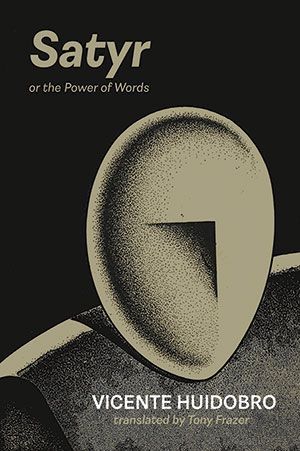
Vicente Huidobro Papa, or The Diary of Alicia Mir / Papá, o el diario de Alicia Mir
Translated from Spanish by Tony Frazer
To be published 2026. Paperback, 150pp, 9 x 6ins, £12.95 / $21. English only.
ISBN 9781848619289 [Download a sample PDF from this book here.]
Huidobro published this deeply personal
roman à clef, something of a cri de coeur, at a time when he was locked in dispute with his first (and much wronged) wife. Told through the narrator/diarist persona of Alicia Mir, daughter of a poet, Alicia is a cipher for Huidobro's eldest daughter, Manuela. Alicia's mother is Manuela Portales, Vicente's first wife, and Eve is Ximena, his second wife, already celebrated as a mixture of Venus and Isolde in the long prose poem,
Skyquake. What could be dismissed as the railings of an embittered man, hoisted on his own petard, are raised to another level however in what turns out to be something of an experimental novel.
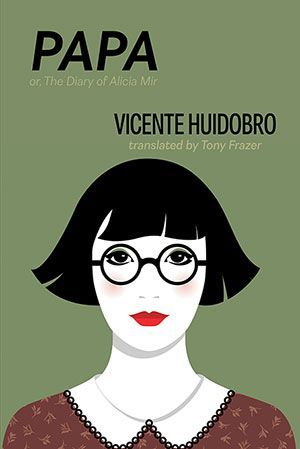
Shearsman Books Ltd. All rights reserved
Shearsman Books Ltd registered office 30–31 St. James Place, Mangotsfield, Bristol BS16 9JB ( address not for correspondence ). Registered in England as company no. 4910496.

